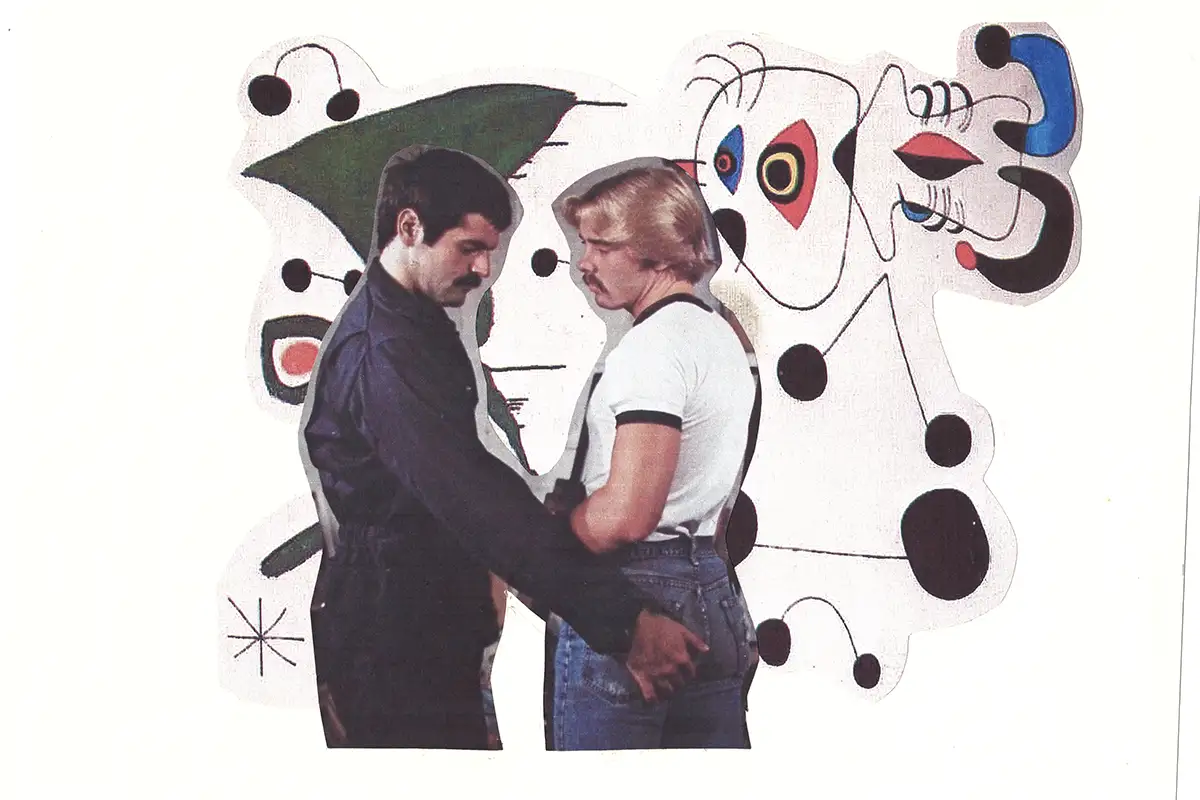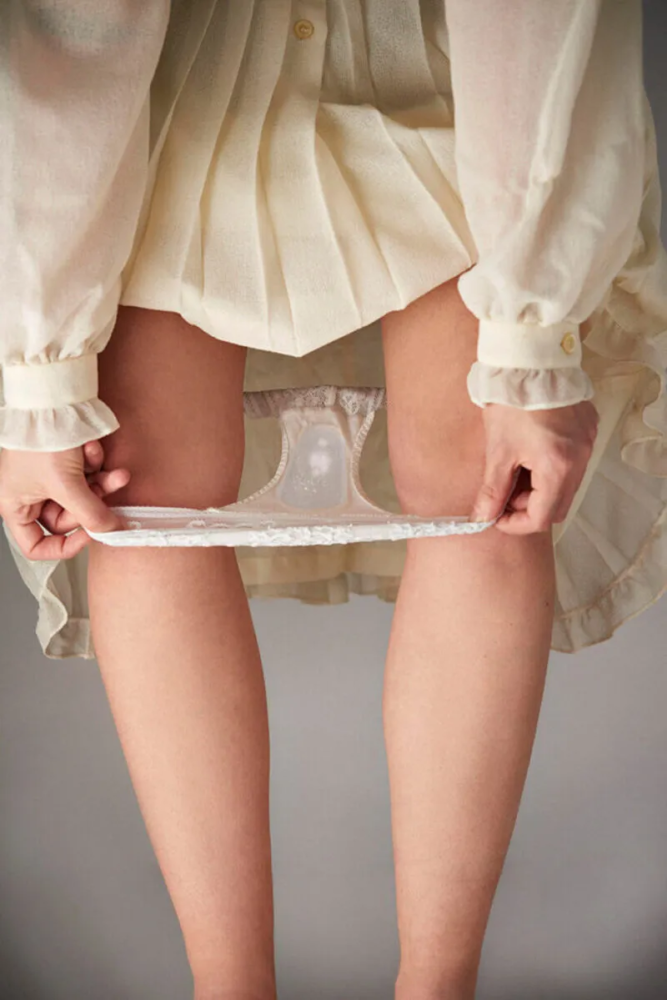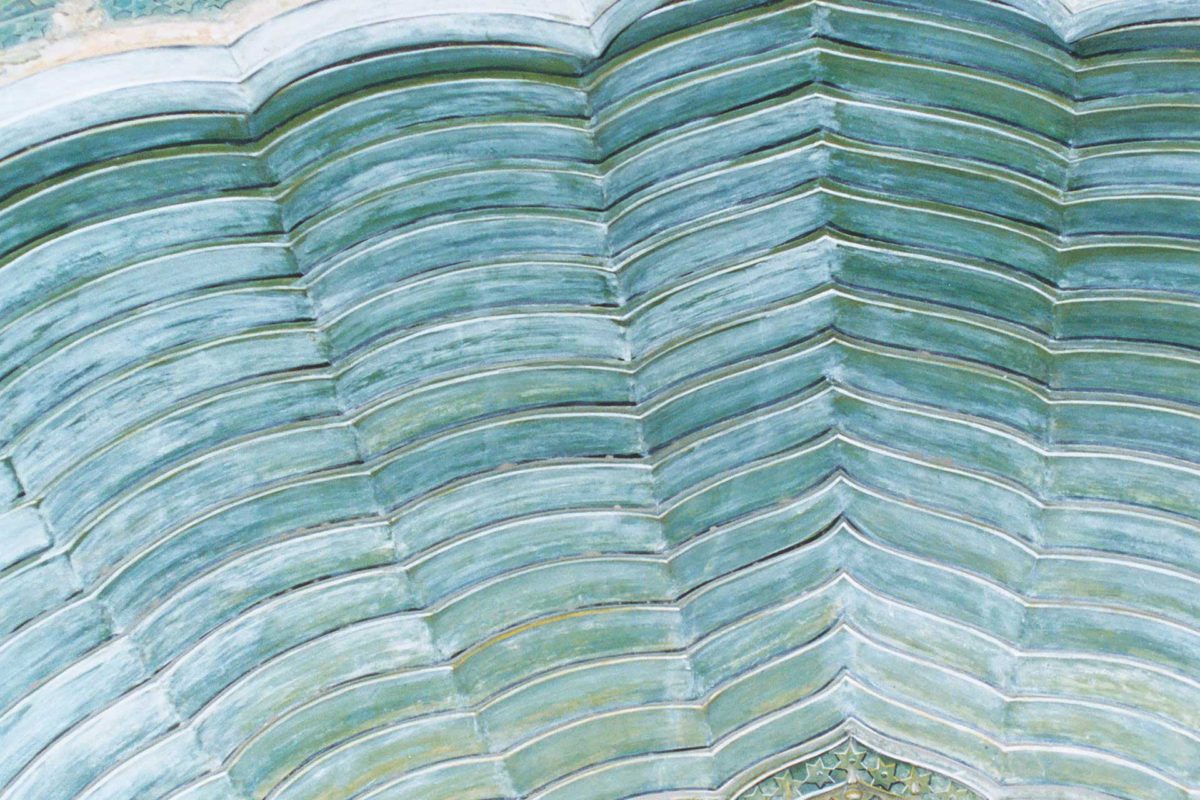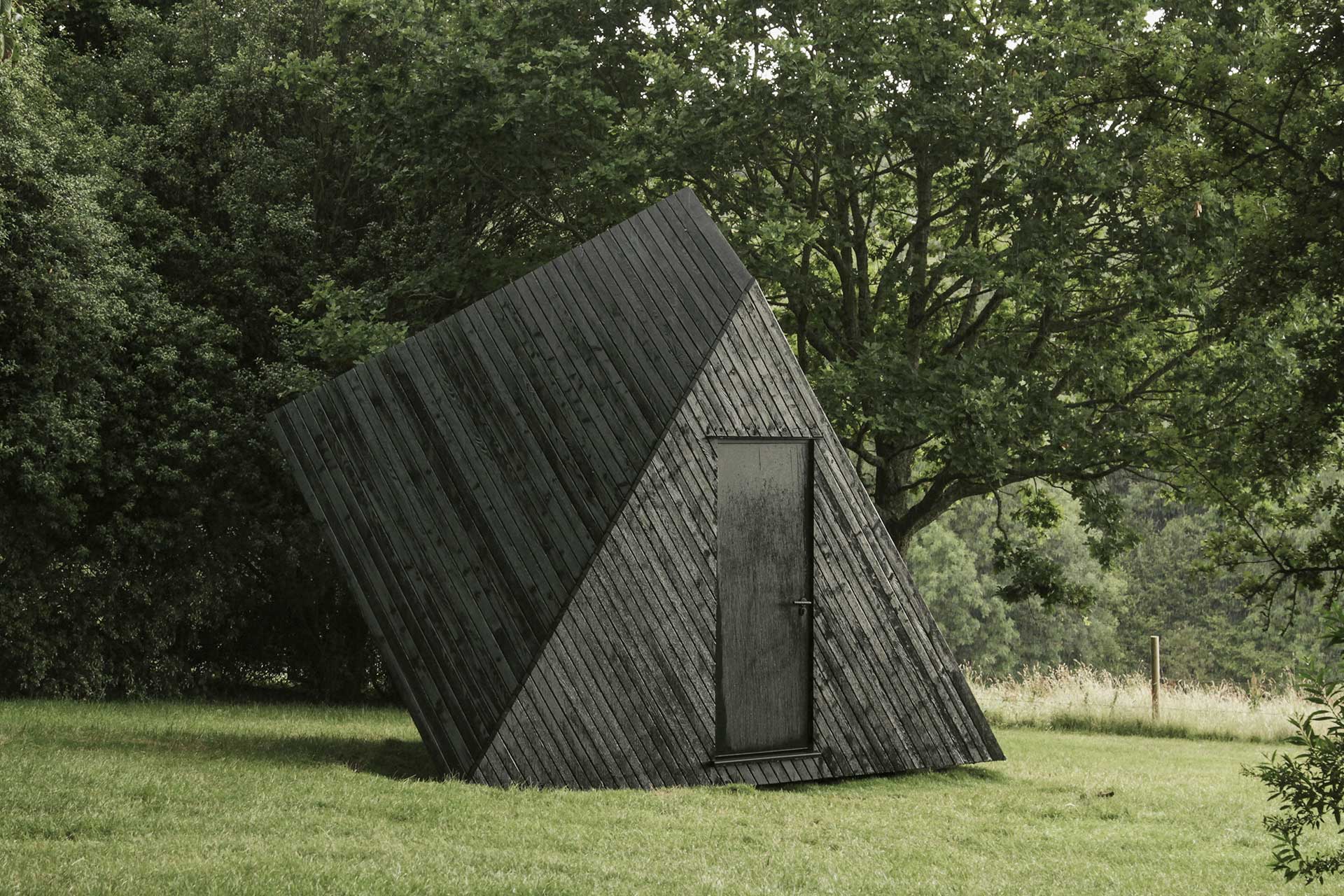
Silvia Prada and the joy of hiding out
Silvia Prada’s ‘fetishistic lens’ to explore the complexities of desire and representation – a conversation on the evolving landscape of queer music, fashion, history and what it means to be a true gay icon
I had the opportunity to call my friend Silvia Prada while I was visiting L.A. We had a conversation about her influences and obsessions. Silvia is an artist whose work is often a love letter to pop culture and queer iconography. Born in Spain, but based in New York City, Prada’s artistic journey is a tapestry of monochromatic and geometric interpretations of cultural moments and figures. Her recent Obsessions show in Brooklyn’s VISO Gallery highlighted her view of Princess Diana as an androgynous icon.
SILVIA PRADA
I’ve been invited to Fire Island so many times, but I’ve never been there. It’s almost like when someone’s never been to the Empire State Building. I imagine Fire Island to be quiet. There’s no cars there, so I imagine it to have the same sound that a place like Venice in Italy would have. I’m not a beach person. Whenever anybody invites me to the beach, I usually say no. I’m more of a mountain person. I started to hate the beach when I was a kid, because my mom used to take me there and stay for hours. It was for me the most boring thing in the world. I love sailing, but the beach is not mine. That’s why I love to go Upstate. I’m more of a forest person. I don’t love to wear swimming suits, unless they’re like a speedo, I’m kind of like a nun. I’m such a gothic person to go to the beach.
Everybody is living in the utopic Eighties and Nineties, in Fire Island. It’s still the same. Most of my best friends can’t wait to spend the whole summer there, it’s almost a religion. It’s a place where people can be themselves. Even though we live in a city that is liberated, I feel like Fire Island is even more liberated. It’s almost like a whole festival of things going on in summer. So many events and friends hanging together in the same house.
The utopic Eighties and Nineties, in Fire Island
TOM JACKSON
Last time I was in Fire Island, I was staying in a house that was on the same boardwalk as this big white house. It was a Richard Meier designed house (I don’t know if he designed it, but it was kind of that genre). It was a white Nineties house on the beach. The people we were with recognized that it was Calvin Klein’s house. In the Nineties, Calvin Klein bought a house, or he built that house there, and it was a big party house. He was someone who is sort of famously gay but not out, even though it was obvious. I know a lot of your work, especially the work featured in this issue, references Calvin Klein and the imagery that was created in the 90s. Could you talk about your relationship with this work and also the designer? Do you have any feelings about him as a designer and his creative output?
SILVIA PRADA
All the archives there are like, almost like a gender experimentation of creating some kind of ideal, almost utopic kind of brand, right? Where it’s just like all the images I create with some of his references are more like a construction of a mood board of my own identity and things I consumed back there in the 90s. So it’s the moments that shape my attractions to the world. It’s part of my self-perception that shaped my sexuality and my gender. I saw pictures of that house, and I guess it also represents his ideal world too. I feel like in Fire Island there’s so many houses, especially the first people that went there, for example, Andy Warhol, I think he had a house too. I feel like Andy Warhol was more living the dream of fitting into the straight world. Straight rich. I feel like Calvin Klein was looking for something else. Everyone had a home on Fire Island. They needed to feel like they were in that festival.
Fire Island shares the same philosophy as Vegas
TOM JACKSON
It was his escape because Fire Island shares the same philosophy as Vegas, in what happens in Fire Island stays in Fire Island. It was probably a safe place for him to be gay and have orgies and do drugs and whatever else he got up. He was probably more comfortable there than anywhere else. A lot of your work features Nineties American youth culture, or just culture from the Nineties. What do you think the culture of that era had that doesn’t exist today?
SILVIA PRADA
Today everything is kind of cooked. If something is genderless, even though we’re living in a non-labels world, everything is labeled. Coming back to Calvin Klein, most of the campaigns – for example, the perfume campaign for Calvin Klein One – it was just so queer without calling it queer. It was like, the way those campaigns age, the way you look at them right now, it’s way more relevant than any campaign you can do for Pride, it doesn’t feel the same. The brand was so naturally built in his vision because. I think the way the transgression is there is way more relevant.
On a recent trip to Japan, I found out that most of the gay clubs were upstairs in a building – never on the street level. It was way more interesting, way more gay than anything else. It was way more sexy too, because you are almost hiding, but everybody knew it was there. It was a little bit like in the Eighties-Nineties: you would get to a club in Europe – Paris or London – and you would get in the club and it was not about being gay or not. It was about getting a drink, dancing, you didn’t know who was gay or not, but it was a good part of the club because it was more about the music. The music was getting so many people together because it was gay music, and many people were not gay, but they were curious.
Mainstream culture begins in queer clubs and with gay people
TOM JACKSON
Let’s talk about queer bars.
SILVIA PRADA
My first gay bar was in London. It was a ravey, a mixed environment, with Acid House by gay producers. All the gay guys were well dressed and obviously not wearing brands. It was a mix of men and women, but they all looked the same. They were Sinead O’Connor look-alikes, their heads were shaved, the girls were topless, and the boys were wearing 501s. I felt safe and felt that these were my people.
TOM JACKSON
Do you think mainstream culture begins in queer clubs and with gay people?
SILVIA PRADA
It used to be like that, but now I’m confused: sometimes I hear some music that’s supposed to be for 13 year old girls, like Taylor Swift, and they become gay culture for men especially, and I’m like what is going on? I feel like it’s becoming the opposite – mainstream culture is becoming gay culture. Lesbian culture is moving towards reggaeton, which is so sad to me. Why are all these mainstream codes becoming gay? Most of them are global gay men. They go to festivals, they listen to the same music that my niece is listening to. That is not what I was growing up with. To grow up with music, it was kind of like, to relate with people in the club. This music, let’s say house, techno, all of that. It’s about connecting with other people. It makes you also feel relaxed, obviously like taking drugs and making out and just having sex. I’m not connecting with who the gays are jumping for. I don’t know, even Lady Gaga, I don’t understand that.
Lady Gaga is claiming to be a gay icon, but she is not. Calvin Klein did not claim to be gay, but she was gay and everything she proposed was gay. It’s music for younger girls. You don’t go to a club and listen to a Lady Gaga song and get super horny and hot and want to kiss everybody. It’s more like jumping and ‘yeah, yeah’. Gay culture is that thing where you can just go in a dark club and it’s not mainstream. It shouldn’t be. We’re different.
Lady Gaga is what Madonna was to me when I was growing up
TOM JACKSON
I’ve had this conversation, because my boyfriend is younger, he’s ten years younger than me, so for him, Lady Gaga is what Madonna was to me when I was growing up, but I think what they don’t understand is that there wasn’t anybody before Madonna. She wasn’t emulating anyone. Of course she was taking from ballroom culture and she was emulating from things around her, but there was no prototype of the kind of pop star she was beforehand.
SILVIA PRADA
She was a gay man.
TOM JACKSON
There was no one else in this pop world. Lady Gaga is an emulation of Madonna.
SILVIA PRADA
She took the marketing, but she also did put out a book, The Sex Book. Everything that happened with Madonna was not orchestrated. I’m reading this biography about her, the way she was going, at 24, to all the clubs, meeting all these gay producers – she was there. She was dancing there. She was comfortable there. It was authentic.
The Sex Book
TOM JACKSON
The Sex Book – I know that was a big influence on you. When that came out she was crucified by the Catholic Church and by every politician. It was no joke. It was everywhere, every headline. They didn’t cancel people back then but she was as close to being canceled as anyone could get.
SILVIA PRADA
She was reading about the temperature of the gay culture. She was so fast, knowing what’s going on. In a deeply Christian society such as America’s, he felt the need to give audience to all the sexual desires of that civilization, and he wanted to include them in a book. That book was kind of a secret. You had to buy it almost like hiding from your parents.
Madonna, Jason Priestley, and of course, Lady Di
TOM JACKSON
Your show in DUMBO: tell me about the subjects, there’s Madonna, Jason Priestley, and of course, Lady Di, who you’ve drawn a lot. I’ve heard you speak about the androgyny of Lady Di. Could you talk about your attraction to your subjects?
SILVIA PRADA
It’s people that are transcending gender forms, not only in the way they look. They also shape new codes in culture, in pop culture at the moment, but that’s because also the Eighties and the Nineties was a time of struggle. People will have to just present themselves through all those gay codes, right? Lady Diana was going through a lot of trauma and that’s why I connected with her – because she was struggling in the same way that any gay teenager does. They struggle with their sexuality. She was also going through hell but her looks were incredible. It’s creative to go through trauma.
For her it was like gender experimentation, like feeling more tough and sporty, like not super feminine, the why the royals wanted to see her. I feel like she incorporated all these references that were more boyish, and for me this is like the epitome of androgyny. Her style is mainstream now. It’s like all the straight girls on TikTok want to look like Lady Di, and they compare her to this actor, Jacob Elordi. But it’s like those Calvin Klein campaigns. That energy is so hard to replicate.
Perfumes and scents and soaps
TOM JACKSON
She was 19 when she got married and she had eating disorders and she had all these anxieties and you know her pain created that beauty that she radiated. It’s not a mood board, it came from within her.
SILVIA PRADA
It wasn’t a stylist. It was all from trauma. I don’t think she wanted to be like Kim Kardashian trying to be front row at the Prada show, she would be like, okay, what’s going on, I don’t know, right now in the world? She would be like, in a war zone, you know?
TOM JACKSON
I want to ask you some questions that you like to ask in interviews, some quicker questions. The first one is, what are you currently obsessed with?
SILVIA PRADA
Perfumes and scents and soaps. I’m assigned to just put together a big collection but I don’t know for what and why. I have to discover it. There’s something going on there. I don’t know if it’s going to be followed by some new art practice or something.
New York, Fire Island
TOM JACKSON
Where are you happiest?
SILVIA PRADA
New York. I travel the world, but I think I feel safe there. When people say I only feel safe in New York, it’s true. People like us. It’s a little Fire Island. It’s another island.
TOM JACKSON
If you were a fruit, what fruit would you be?
SILVIA PRADA
I’m a strawberry. It’s fresh and it’s the fruit you eat after having sex. I’m such a cuddler, so probably that.
Tom Jackson
[envira-gallery id=”138464″]







